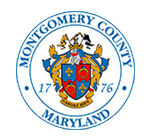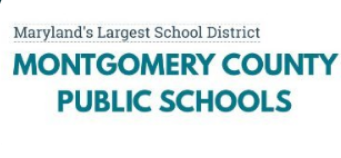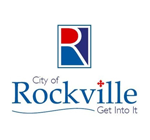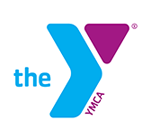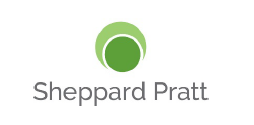About Linkages to Learning

History and Evolution of Linkages to Learning
Linkages to Learning began in 1993 as a pilot initiative in Highland and Summit Hall elementary schools, and at the Rocking Horse Road School Health Services Center which serves newly-enrolled MCPS international students. The impetus for its development came from a County Council Resolution calling for a new, interagency collaborative program to address the mental health and social needs of at-risk children and families in Montgomery County. The resolution, which was adopted in December of 1991, was in part the result of changing demographics and new health and human service challenges emerging within the County. These changes included an increase in the number of foreign born, non-English speaking, poor and under or uninsured residents; increased reports of child abuse; increased numbers of children in foster care; and greater incidences of family stressors such as divorce, domestic violence, absent parents and substance abuse.
The original two Linkages to Learning sites offered services to children attending the schools and their families, and were located within the school building. Each program offered a range of mental health, somatic health, social service and educational support services. Program staff included a site coordinator/case manager, mental health therapist, community services aide, and school nurse. The specific services available in each program were determined by the particular needs and priorities of that school/community. A community needs assessment conducted prior to the implementation of the program was, and continues to be, a critical step in identifying the specific goals and program priorities for a Linkages to Learning site.
Based on the anecdotal successes and high participation rates at the original Linkages to Learning schools, a grant from the U.S. Department of Education was awarded to the University of Maryland in 1995 to conduct a full-scale evaluation of the Linkages to Learning model. The grant also funded the establishment of a fourth Linkages to Learning school-based program at Broad Acres Elementary School in 1996. Several months later, two additional programs were established at Harmony Hills Elementary School and at the Mark Twain School, a middle and high school for emotionally disabled students. Services at each site were determined by school/community needs and available resources.
In 1997, funding from the Robert Wood Johnson Foundation to the State of Maryland enabled two of the existing school-based Linkages to Learning programs to expand their services to include a more extensive array of somatic health care services. These two sites, at Broad Acres and Harmony Hills Elementary Schools, thus became the prototypes for a new Linkages to Learning service model: the school-based health center. Like the original school-based programs, the Linkages to Learning School-Based Health Centers are located within a single school, and offer services to children at that school. Children must be enrolled in the School-Based Health Centers to receive services. In addition to the services mentioned above, services offered through the School-Based Health Centers include:
- primary health care for students, including physical exams and immunizations
- laboratory testing
- prescription and dispensation of medications
- diagnosis, treatment referral and case management for children with acute and chronic illnesses
- physical exams for siblings of enrolled students
Staff at the School-Based Health Center include a site coordinator/case manager, mental health therapist, school nurse, nurse practitioner and consulting physician. There may also be a community service aide, health room technician, and/or graduate school interns as part of the core site staff.
In September 1997, the first Linkages to Learning school-based program in a middle school was established at Gaithersburg Middle School, and a program at Greencastle Elementary School was opened in early 1998. Again, a unique combination of services was developed for each of these sites based on community needs and available resources. Also in 1998, a different Linkages to Learning service model was piloted: the cluster-based team. Unlike the original school-based Linkages to Learning programs, the Cluster-Based Teams were designed to serve students at several schools (within a cluster), ranging from elementary up through the middle school level. This model aims to provide greater consistency and continuity of care throughout the student’s school years. In addition, the Cluster-Based Teams focus primarily on prevention and early intervention. Services offered are short-term, with efforts to link students and families with existing programs offering ongoing care. Services provided through the Cluster-Based Teams include:
- short-term counseling
- case management and service coordination
- counseling and prevention groups
In 1998, four high school clusters were designated to be serviced by the Linkages to Learning Cluster-Based Teams. These were the Montgomery Blair, John F. Kennedy, Paint Branch, and Seneca Valley clusters. By 2002, only the Kennedy cluster had retained this cluster-wide approach.
As the program grew, it became clear that the administrative policies and procedures should become more formal. To that end, Linkages to Learning adopted its first Six-Year Strategic Plan in 1999. One of the core principles of the plan referred to the criteria for opening new Linkages to Learning sites. Rather than open sites based on perceived need, the Linkages Advisory Group decided to adopt a measure of true need – the percentage of low-income children attending a school, as measured by the number of its students eligible for the federal government’s Free and Reduced Price Meals Service (FARMS). Linkages to Learning ranked every school in Montgomery County by their FARMS rate and set a goal of opening sites in each school with a rate of 60% and above. Today, ranking of suggested future Linkages to Learning sites is strictly based on the school’s “Ever FARMS” rate, which takes into account children who participated in FARMS in the past (but may not be currently), as a truer indicator of overall poverty trends within the school community. Linkages to Learning chooses school sites based on a school’s “Ever FARMS” rate, available funding, and the school’s readiness to devote space to Linkages to Learning staff.
